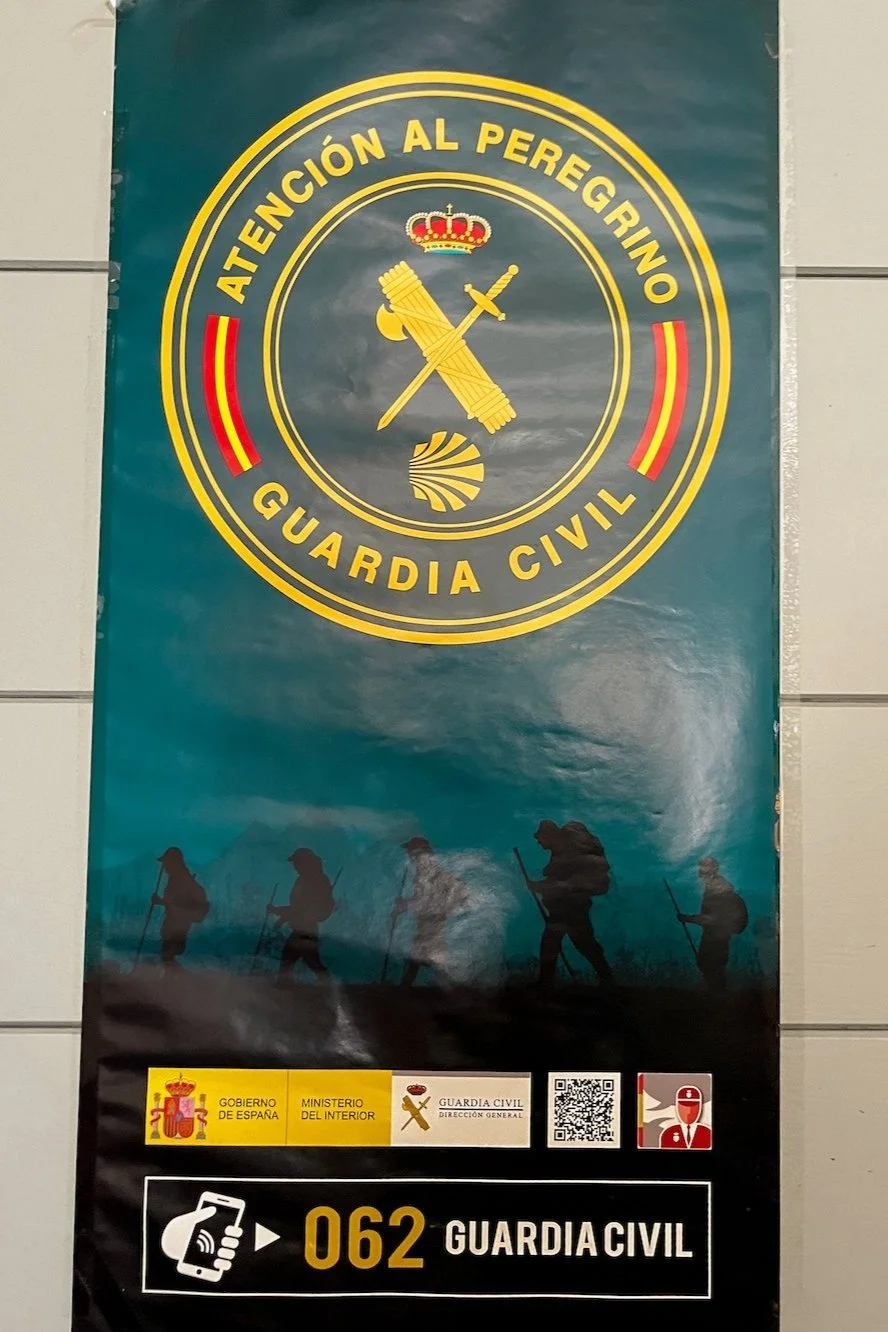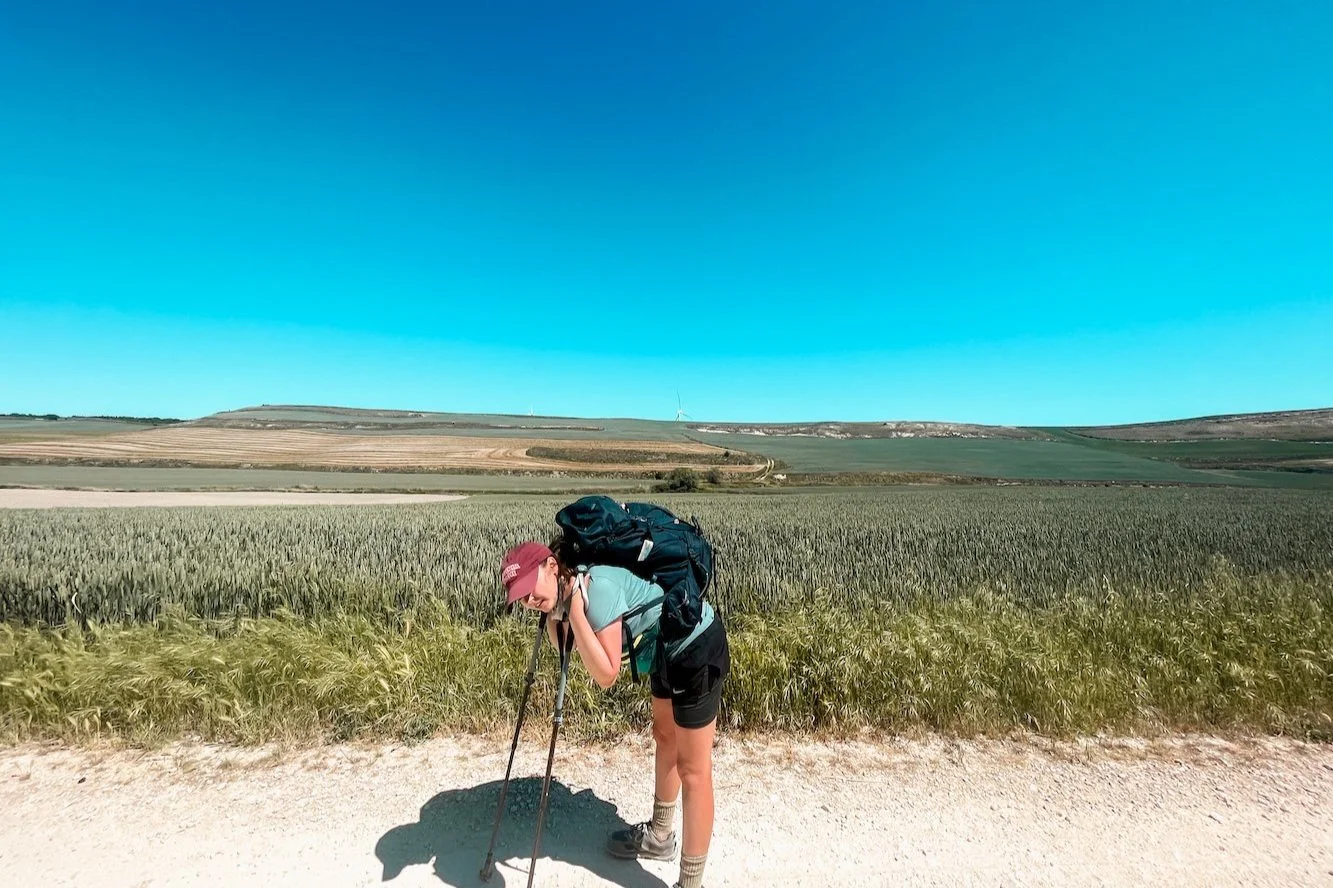10 Safety Tips for the Camino de Santiago
Me on the Camino
When I began my research for the Camino de Santiago, I had so many questions about safety. My parents did too.
How safe would it be for my sister and I to walk the Camino by ourselves? Could we walk parts of it alone if we wanted to split up some days?
What about our stuff? How should we keep it safe? Is there petty theft?
How do I avoid having to get medically evacuated off the side of a mountain because I’ve seriously injured myself?
What other safety things am I not thinking of?
So here is a run-down on all things safety on the Camino de Santiago.
1. Take normal safety precautions when walking the Camino de Santiago.
While I always thought I would be safe walking on the Camino de Santiago, my parents were worried about my sister and me walking together as two young women. After walking the Camino, I can say that I never once felt threatened or unsafe. I would even be confident in my ability to walk the Camino alone as a woman.
Though I can never guarantee that you will be 100% safe—that’s not possible anywhere you go—I would say that the Camino de Santiago is really safe. Just take your standard precautions: be aware of your surroundings, don’t wander around alone at night, stay on the trail, don’t walk with both headphones in, etc.
During peak months, there will almost always be someone within sight or yelling distance from you because the paths are so crowded, so there is safety in numbers.
2. Know emergency phone numbers.
Poster with the Guardia Civil’s information hanging in Roncesvalles albergue
It’s always good to have the phone numbers for any emergency services you might need.
When in doubt, dial 112. This is the standard European emergency number. The operator will transfer your call to where it needs to go based on your situation.
For medical emergencies, dial 112 or 061.
For safety emergencies or concerns, you can dial 062, which will contact the Guardia Civil. This is the main security force for the Camino de Santiago, and they take the safety of pilgrims very seriously. They have even developed an app for pilgrims called Alertcops that can alert police of an emergency and send them your location in real-time. You will also see them patrolling the paths.
3. Be prepared for minor and major medical issues.
As part of your packing list, you should have a first-aid kit with all the basics you might need. Your first-aid kit should be prepared to handle things like blisters, cuts, headaches, allergies, and stomach issues. Every major town and city will also have pharmacies where you can resupply items or pick up forgotten basics.
Make sure you also take restorative care of your body every night by stretching, elevating your feet, and getting enough sleep.
If you encounter major medical issues, don’t hesitate to seek professional help. If you are seriously sick, go to a doctor or find a hospital. Albergue volunteers can help guide you on what would be best.
Make sure to have travel insurance with good medical coverage, especially because walking the Camino de Santiago is such a physically taxing undertaking.
4. Deal with physical pain issues swiftly.
Little things can become big things if you don’t address them right away. As soon as you feel a blister forming, stop walking and take care of it. If you feel like your insoles aren’t supporting your feet enough, get new ones in the next town.
Small discomforts that we usually ignore in everyday life will be compounded by miles of walking on the Camino and can truly ruin your pilgrimage. Be responsible and take care of issues as soon as they pop up!
Using my trekking poles to rest for a few minutes while walking in the Meseta
5. Keep your important documents and valuables on you at all times.
You never want to be separated from your ID, pilgrim passport, and money.
I kept all my valuables in a waistpack that I never took off. So when we stopped for breaks along the way, my backpack would come off, but the waistpack wouldn’t. When sleeping, my waistpack was in my sleeping bag with me.
When it came to showering, my sister and I went in shifts so that we could watch each other’s valuables. If you’re walking alone, invest in a good dry bag that you can bring into the shower with you. Don’t forget to pack an S hook to hang the dry bag in the shower, so you don’t have to put it on the gross floor. S hooks were one of my favorite things on my Camino packing list.
6. Use common sense when leaving your bag places.
This was one of my biggest safety questions before walking the Camino de Santiago: How do I prevent people from stealing my stuff when I’m wandering the towns in the evening or enjoying breakfast at a cafe?
The truth is, I actually wasn’t too concerned about it for most of the Camino. I just used common sense to make decisions when I had to leave or store my bag.
In albergues, pilgrims leave their stuff near their bed (always avoid putting your bag on or leaning up against beds to prevent picking up bed bugs) without locking it up all the time. There was a certain level of trust that in albergues—where everyone is a pilgrim—no one will steal your stuff. It’s an honor system.
It’s rare that things get stolen. Most albergues don’t have lockers. And even when albergues did, I rarely used them. It would have been seen as distrustful by my fellow pilgrims.
When I was in bigger cities and staying in hostels where there was a mix of pilgrims and other travelers, I always locked up my stuff.
In very small towns, there were times I went inside a café to order (or eat inside) and left my bag completely unattended outside. I never did this in bigger cities.
Odds are, people won’t want the few things you carry in a very sweaty backpack. And as stated before, don’t leave your valuables or important items in your backpack.
7. Be mindful of cars.
Cars are honestly a bigger threat to your personal safety than other people on the Camino. There are times when you will be walking along busy roads, crossing highways, or dealing with big-city traffic.
I was always very vigilant of cars in these cases.
If you’re walking early in the morning, wear a headlamp to make sure you can both see and be seen. I also bought a reflective armband to wear on dark mornings and on more overcast days to make myself more visible.
When crossing the street, remember the lessons your parents taught you: look both ways, listen carefully for oncoming traffic, etc.
View of a Spanish highway while walking along overpass
8. Do not underestimate the weather.
Because most pilgrims are walking in the warmer months, intense heat is one of the most common weather challenges you will encounter.
Be aware of the weather forecast and daily temperatures, start early to avoid walking during the hottest parts of the day, and stay hydrated, refilling your water bottle every chance you get. And load up on that sunscreen and reapply every couple of hours at least! Trust me, your skin will thank you.
This may seem obvious, but also avoid walking through bad storms. If you see one coming, don’t try to walk through it. Take cover in a café, under a bridge, or find a natural shelter. Trust me, it won’t completely ruin your schedule for the day to wait out storms. They typically come and go pretty quickly!
One morning, I woke up at 5am to walk. As I was getting ready to leave this mountainside albergue, I could see lightning flashing in the distance. Because it was still dark, I couldn’t tell if the storm had already passed while I was sleeping or if it was heading towards me. I decided to wait it out, and I am so glad I erred on the side of caution. Within 30 minutes, there was heavy rain, thunder, and lightning right overhead. If I hadn’t waited, I would have been walking—in the dark—up a mountain in a terrible storm.
Showing off my poncho right after getting caught off guard by a thunder storm
9. Keep your phone charged!
Many people love to disconnect from technology while on the Camino. I’m not telling you that you have to use your phone every day, but I do believe it is important that it is fully charged in case of emergencies.
If you get lost, you may need to reference one of your helpful Camino apps to find your way back to the path. You could also need it to call for emergency assistance if you injure yourself or encounter other threats while walking.
10. Listen to locals when they give tips and warnings.
The locals know Spain way better than you do, so take their advice seriously. When I began my Camino, I got a ton of helpful advice on the intense trek over the Pyrenees mountains from locals who volunteered at the pilgrim office.
Throughout my Camino, locals also gave me good recommendations on where to go or avoid in towns as well as weather warnings.
Pay attention to signs along the way




